The energy crisis is a global issue it’s not only in Egypt.
The global energy crisis is intensifying as demand surges, particularly in developing nations like Egypt. Energy sources can be broadly categorized into renewable and non-renewable. Non-renewables, primarily fossil fuels (coal-oil-natural Gas), currently dominate the global energy mix due to their perceived affordability. However, this perception is increasingly challenged, especially in regions like the Middle East. In contrast, renewable energy, derived from renewable sources such as solar, wind, and hydro-power, offers a sustainable alternative.
So, which is better: renewable or non-renewable energy? And what about the cost?
Renewable energy undoubtedly has environmental advantages, being clean and sustainable. However, the question of cost is more complex.
While non-renewable sources might seem cheaper upfront, their long-term implications, including environmental damage and geopolitical instability, can significantly increase their overall price.
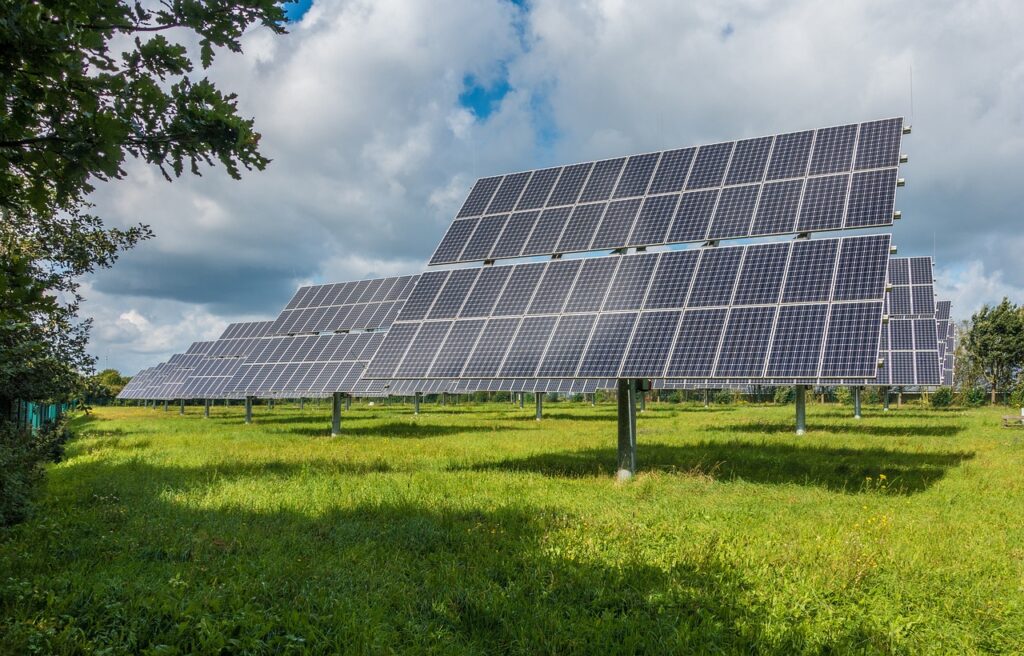
That is what we will discuss in this post.
The Myth of Cheap Fossil Fuels
For decades, non-renewable energy has been perceived as the most cost-effective option, particularly in oil-rich Middle Eastern nations. However, a deeper analysis reveals a more complex reality. While initial extraction and production costs may seem lower, the long-term consequences—including environmental degradation, health hazards, and geopolitical instability—significantly escalate the true price of fossil fuels. Furthermore, as oil reserves are finite, with depletion projected within the next 35 to 40 years, long-term investments in alternative energy sources are imperative, even if they currently appear less efficient.
Egypt exemplifies this challenge. Despite being a major oil producer in the region, without possessing the largest reserves, the country faces a critical energy shortage due to its huge population and developing industrial sector. This necessitates careful management of energy resources.
After Egypt successfully overcame an energy deficit between 2016 and 2022, by achieving a surplus in electricity generation capacity. Yet, since 2022, the economy has encountered significant challenges. Global events surge in inflation and fossil fuel prices has strained Egypt’s national budget, forcing Egypt to reduce the usage of electricity by cutting off it a couple of hours daily. to reduce fuel imports because of the economic crisis it passes through.
This raises the question what if Egypt had invested more in renewable energy since 2015 instead of Natural Gas powered plants?
Renewable energy start point
At the beginning of 2000’s the renewable energy began to become a new trend. And all the developed countries especially European ones began to invest in it. they began to develop the tech of producing energy through solar and wind. they took this road as a countermeasure to the increasing of fossil fuel prices and to rely on more sustainable energy source. they knew that the initial cost of such a new energy would be high and not competing. but in the long term the efficiency of solar cells for example will increase and the production costs will decrease with the increasing demand for them over time.
In the comparison of Oil global prices in 2000 and now 2024

You will find that the trend is up and Oil prices eventually increase with time. which means depending on it as a main source of energy isn’t economical anymore.
The renewable energy
A few years ago we can enter a real debate of whether is it worth it to invest in renewable energy or not. and if it’s beneficial.
But after I show you the following data and charts I think the debate is set clear. Let’s see.

In this chart, we see a comparison of different energy sources and the cost of producing the same amount of Energy.
Notice that since the year 2015, the cost of solar power crossed the cheapest form of producing energy through fossil fuels with Natural Gas.
This chart is based on a calculating formula called LCOE.
LCOE is The Levelized Cost of Electricity is a measure of the average net present cost of electricity generation for a generator over its lifetime. It is used for investment planning and to compare different methods of electricity generation on a consistent basis.

| It | Investment expenditures in the year t |
| Mt | Operations and maintenance expenditures in the year t |
| Ft | Fuel expenditures in the year t |
| Et | The electrical energy generated in the year t |
| r | Discount rate |
| n | Expected lifetime of system or power station |
Conclusion of renewables VS. non renewables
According to the previous data, both renewable sources wind and solar became the cheapest form of energy. This means now it’s time to encourage the adoption of this form. It’s not only become the cheapest but also the best for the environment and sustainability.
In Egypt’s Case
Throughout the following data, we will see that Egypt missing a huge opportunity and should move fast in adopting solar energy in particular.
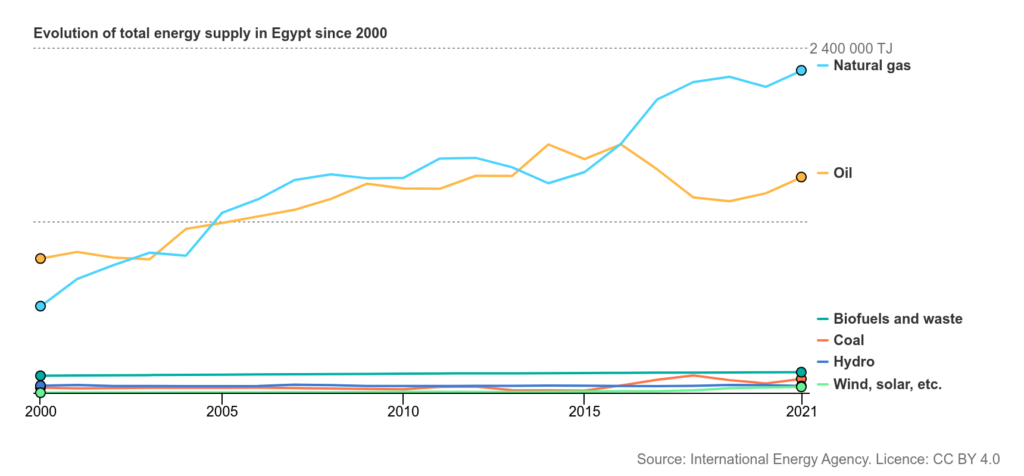
As we notice Egypt relies a lot on Natural Gas and Oil in Providing Energy. The energy here includes all sectors like residential, commercial, industrial, transportation, etc.
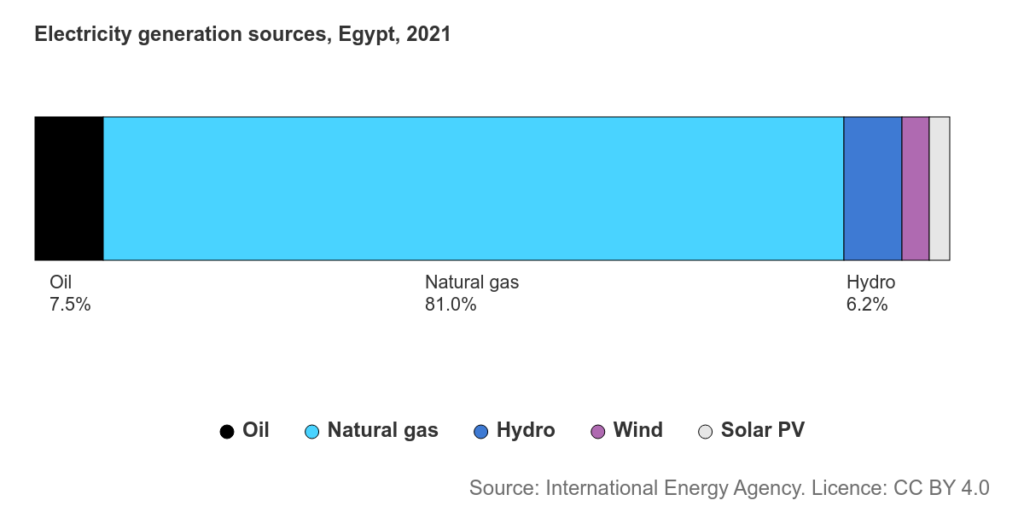
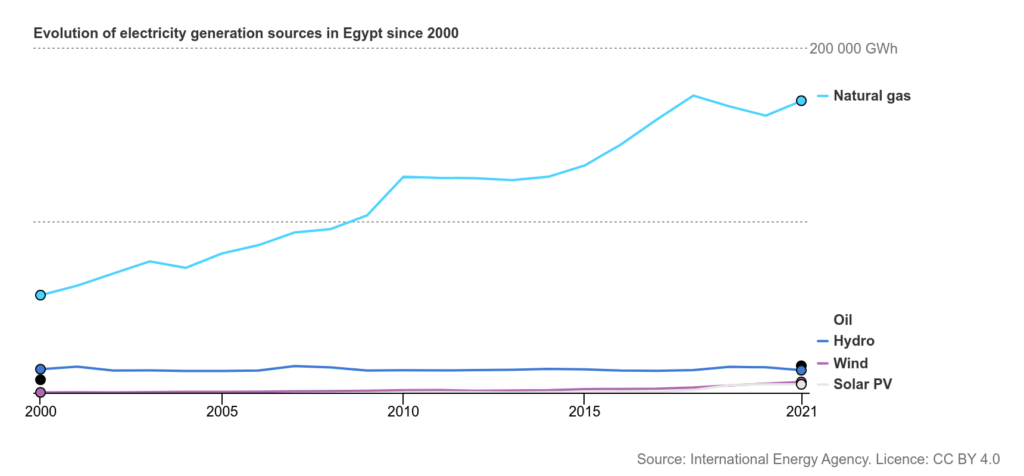
From the previous two charts, we see that Egypt relies a lot on Natural Gas for producing Electricity, Which was the best choice till it arrived in the year 2015. With the decrease in costs of solar cells and to benefit from the increasing capacity of Natural Gas production.
Solar energy production is around 4000 GWh and Wind energy is about 6000 GWh from around 180000 GWh total electricity production.
When you see that Egypt’s production of Natural Gas exceeds UAE. but it consumes all the production on a national scale instead of exporting and boosting its economy. You see the importance of investing in an alternative source of electricity and saving the other resources for better usage and more beneficial ways.
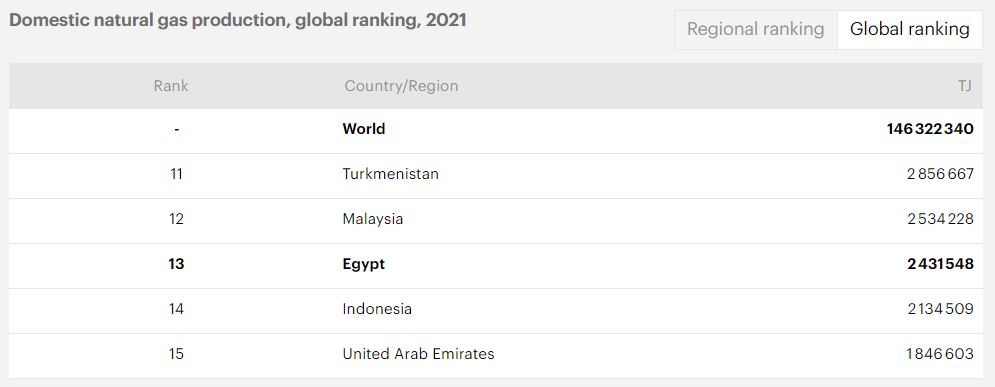
To answer the question, “Can solar energy save Egypt’s energy crisis?”
Egypt possesses unparalleled potential for harnessing solar and wind power. Given its abundant sunshine and consistent wind patterns, the country has a unique opportunity to lead in renewable energy production. To fully capitalize on this advantage, Egypt should prioritize incentivizing private sector investment in renewable energy projects, while simultaneously creating a favorable environment for the domestic manufacturing of solar panels and wind turbines. Implementing temporary customs exemptions on renewable energy equipment can accelerate this process and foster a robust domestic industry. By strategically embracing these measures, Egypt can not only secure its energy future but also position itself as a global leader in clean technology.
So, I believe that renewable Energy has proven that it has the potential and it’s the future. If Egypt doesn’t start from now to accelerate its adoption it it may be too late in the future and lose a huge opportunity in competition and acquiring a rising technology.
Let me know your opinion also in the comments. and don’t forget to share if you found this post useful. it encourages me to write more and develop the content of the blog.


Hello There. I discovered your weblog using msn. This is a very neatly written article. I will be sure to bookmark it and come back to read more of your helpful information. Thank you for the post. I’ll definitely return.
xzhbvf
Thanks a lot for sharing this with all of us you really know what you’re talking about! Bookmarked. Please also visit my website =). We could have a link exchange agreement between us!
This is really attention-grabbing, You’re an overly skilled blogger. I have joined your feed and stay up for seeking extra of your excellent post. Also, I’ve shared your website in my social networks!
4la1f5
Your style is so unique compared to many other people. Thank you for publishing when you have the opportunity,Guess I will just make this bookmarked.2
Some truly nice and utilitarian info on this site, also I think the layout has great features.
I have read some good stuff here. Certainly worth bookmarking for revisiting. I wonder how much effort you put to make such a excellent informative website.
I am no longer positive the place you are getting your information, however great topic. I needs to spend some time finding out much more or working out more. Thank you for excellent information I was on the lookout for this info for my mission.
Hi there! This is my first visit to your blog! We are a team of volunteers and starting a new initiative in a community in the same niche. Your blog provided us valuable information to work on. You have done a marvellous job!
I was just seeking this information for some time. After 6 hours of continuous Googleing, finally I got it in your site. I wonder what’s the lack of Google strategy that do not rank this kind of informative websites in top of the list. Generally the top sites are full of garbage.
eoj2uu
o7a44g
I don’t usually comment but I gotta state regards for the post on this one : D.
bmKNpKpzrQqnTEDJXTmfis
ChEMVMWEZfqBzXraiLHWQ
You made some first rate factors there. I looked on the internet for the difficulty and found most individuals will associate with with your website.
Have you ever thought about adding a little bit more than just your articles? I mean, what you say is valuable and all. But just imagine if you added some great pictures or videos to give your posts more, “pop”! Your content is excellent but with pics and videos, this website could certainly be one of the very best in its field. Good blog!
you are really a good webmaster. The site loading speed is amazing. It seems that you are doing any unique trick. Moreover, The contents are masterwork. you’ve done a fantastic job on this topic!
Valuable info. Lucky me I found your website by accident, and I am shocked why this accident didn’t happened earlier! I bookmarked it.
Wohh just what I was looking for, thanks for putting up.
Thanks for sharing. I read many of your blog posts, cool, your blog is very good.
Thank you for another informative blog. Where else could I get that type of information written in such an ideal way? I have a project that I’m just now working on, and I’ve been on the look out for such information.
I’ve recently started a website, the information you provide on this site has helped me greatly. Thank you for all of your time & work.
Thanx for the effort, keep up the good work Great work, I am going to start a small Blog Engine course work using your site I hope you enjoy blogging with the popular BlogEngine.net.Thethoughts you express are really awesome. Hope you will right some more posts.